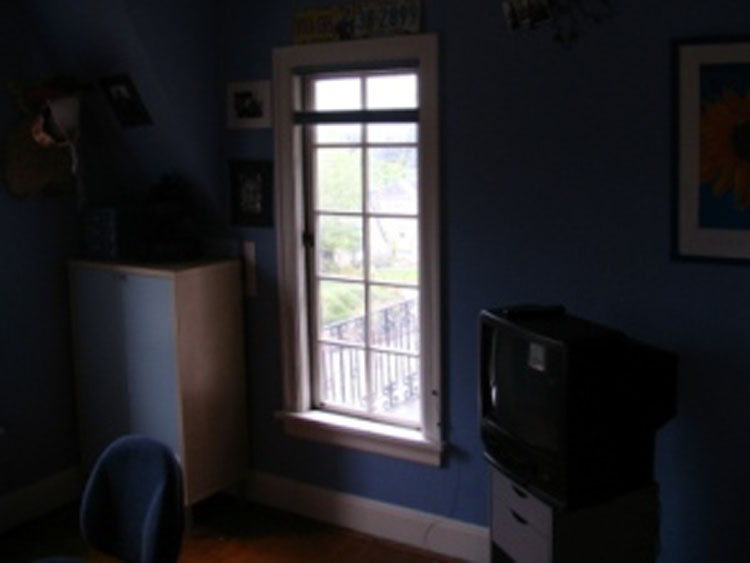|

A Portland Tudor in the Grant Park area.
|

The original sash casement windows are really in great shape for their age, even though a number of them are painted shut and/or the friction-hinges are corroded and barely work and/or the weatherstripping is damaged, ill-fitting or missing.
|

So we were employed to repair any damage on them, trim them down as needed for the proper clearances relative to the jambs, replace the friction hinges and to weatherstrip them with some of the latest and greatest compression weatherstripping.
|

We set up a temporary shop on-site as we often do. If it’s raining, and if our client doesn’t have a garage or a porch that we can use for this purpose, we have several tent type covered structures that we can set-up…or even a large self-enclosed trailer that we can work in. We are quite resourceful & practiced at dealing with weather issues in the Northwest.
|

Some of the windows had need for us to replace loose or missing glazing-putty around the glass, and there may have been a broken pane of glass or two that we replaced for our client.
|

Tony & Nate going about their craft. You know, there is great satisfaction in being really good at something. It’s fun! And one of our greatest joys as professional craftsmen is taking a door or window that barely worked and then having opportunity to see the look on a client’s face as they operate one of the windows for the first time after we’ve applied our trade to it.
|

This is a shot of one of the original “friction-hinges” that we replaced. The new ones were a bit thicker, more heavy-duty which necessitated that we modify the mortise or the “plow” on the sash as needed.
|

As you can see, this particular house has both the traditional rectangular window panes, as well as the diamond-lite muntin-patterns in the various casement sash windows.
Wikipedia identifies Muntins as “…a strip of wood or metal separating and holding panes of glass in a window.”
|

Muntins are also called “muntin bars”, “glazing bars”, or “sash bars”. Muntins can be found in doors, windows and furniture, typically in western styles of architecture. Muntins divide a single window sash or casement into a grid system of small panes of glass, called “lights” or “lites.”
|

If you look closely, you may be able to make out the light-brown Silicone Bead weatherstripping that we machined the jambs for & installed in the corner between the “rabbet” and the “stop” portion of the jamb assembly, and against which the window-sash sits when in the closed position. This weatherstripping product is not seen when the window is closed, and it’s a very effective type of weatherstripping.
|
|
|